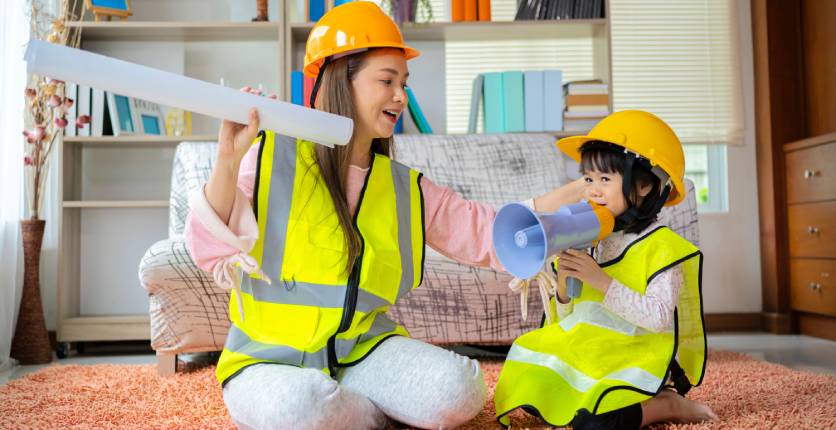Children are born with lots of creativity. Ever seen how many ways a toddler can find to play with porridge? Or the number of places your kids can think of to hide the car keys in?
But somehow, over time, many children lose the chances they have for play and creativity. School, homework and a million other commitments take over their lives. But creativity doesn’t have to go away. If you take the time to invest in building creative opportunities into your family’s daily life, you will find that your children will continue to learn and grow as creative individuals.
Essential Tools for Encouraging Creativity
Create Pockets of Free Time

Creativity demands space. It demands physical, spatial as well as psychological space. If your children’s minds are trapped in a state of stress and exhaustion, they will have little room to think about new ideas or creative solutions out of the cycle they are in. If your house is so filled with clutter, or the opposite – so regimented, that there is nowhere for your children to draw, play or be themselves, they will have nowhere to be creative in. If your days are so packed with planned activities, there will be no time for your children to try something new on their own.
The key thing about creativity is that it needs to be something that your kids initiate and explore on their own. Designing and making your very own kite is a creative process. Attending a workshop where you are told exactly how to make the best kite and provided with the required decorating and building materials is not.
Use Questions to Explore the World

Creative people are constantly questioning the world. Not because they are unhappy with it, but because they want to understand how it works, how they fit into it and how to predict what might happen when they try something that’s never been tried before.
So start young with your children. Encourage them to ask questions. Ask them what they think the answers will be, don’t teach them that there is only 1 model answer, because that may or may not be true. Counter their questions with more questions to help them to get to the heart of the matter. And then, spend time with them searching for the answers. Whether it’s an internet search, or a real experiment involving plants in your garden, encourage them to test their theories out on the world.
DIY Mom and Fix-It Dad

Most creative individuals believe that they can find a solution to just about any problem. Model this behaviour for your kids. When something is broken in your house (unless it is something potentially dangerous like the electrical system), try to fix it yourself. Discuss ways that you think it can be done and allow them to help if possible. This can-do attitude will give them the confidence to creatively attempt to solve problems which others may have given up on.
Reward Effort over Results

It is tempting to reward results. It is so easy to say “if you get 100% I’ll buy you a new phone”. But a focus on results means that children will be unwilling to take risks and to learn from mistakes. It also sends the wrong message, if immediate results are all that matter, then persistence and a pursuit of a vision will not be. It took Alfred Goodyear more than 10 years in which he experienced near bankruptcy several times before he unlocked the secret potential of rubber. It took many other creative geniuses just as many years before they achieved their break through discoveries. Rewarding effort means that you recognise the importance of persistence, and persistence is also a facet of creativity.
See Failure as a Learning Opportunity

We learn more when we fail than when we succeed. Confronting failure forces us to think about what we did right and what we could have done better. Failure can also point the way towards a change in direction which could lead to a better answer. So, view each failure as a learning opportunity. Spend time with your children to understand what they think they could have done better and talk about how they want to approach the problem a second time.
Invest in Open-Use Toys

Try to buy toys for your children which are designed to allow them to use their imaginations. Lego, building blocks, play dough, dolls and even art and craft supplies are all great places to start with.
Key Takeaways
- Nature is on your side. You don’t have to teach creativity, you just have to nurture the creativity that every child has to begin with.
- Give your children the space to be themselves and to experiment with creativity.
- Encourage your children to explore the world on their own terms.
- Resist the urge to correct them and provide the “right” answers to their questions.
- Nurture a can-do attitude and remember to reward effort over results.
This article was first published by Families for Life.







